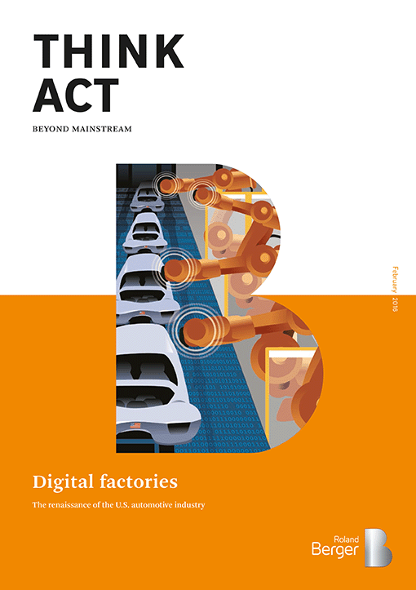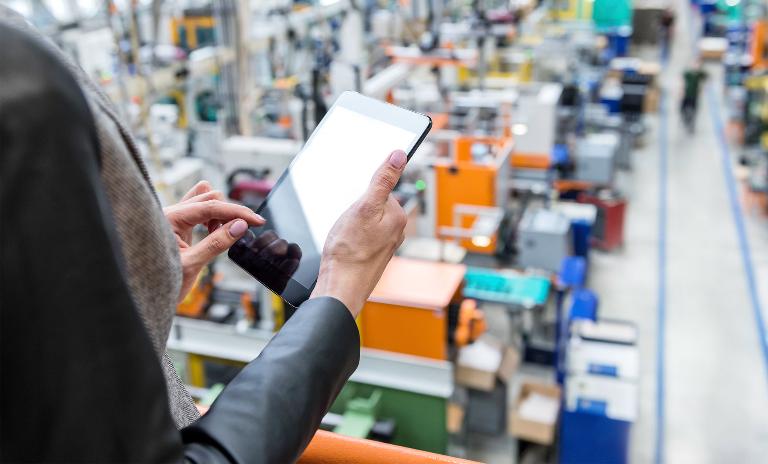Digital Factories
![{[downloads[language].preview]}](https://www.rolandberger.com/publications/publication_image/roland_berger_tab_digital_factories_20160217_1_download_preview.png)
The time to capitalize on digital factories is now.


The future of many global economies is marked by transformations in the digital sector, and the auto industry is no exception. From urban car sharing services to connected vehicles, growth in the auto industry requires adaptation, improvements in manufacturing, and the utilization of existing resources. In this issue of THINK ACT, our experts turn their analytical eye to the fate of the U.S. automotive industry, addressing key issues and pressures manufacturers will face during the growing digital revolution and laying out strategies industry leaders can implement now to keep their businesses at the fore of this fiercely competitive market.
"There are annual savings of $16-32 billion waiting to be realized for domestic automotive production in the U.S. This equals 10-20% of the addressable production costs and is realized by following a trend which is also known as the fourth industrial revolution, or simply Industry 4.0," says Stephan Keese, a senior partner with Roland Berger.Digital interconnectivity between production stages allows for smart, economical manufacturing from logistics to customization, and non-stop communication. When the intelligent infrastructure of this revolution is harnessed, manufacturers will gain a foothold in this emerging market to meet the demands of the future.
The time to capitalize on digital factories is now. The U.S. not only maintains a competitive advantage due to existing clusters of IT technology, it is also home to a strong combination of infrastructure, internet integration, and an educated labor force that can collaborate in the implementation of Industry 4.0. The U.S. ticks all the right boxes to be the future of digitized automotive manufacturing—and THINK ACT brings pioneering changes in the industry into focus, making it a valuable resource for senior automotive management.

![{[downloads[language].preview]}](https://www.rolandberger.com/publications/publication_image/roland_berger_tab_digital_factories_20160217_1_download_preview.png)
The time to capitalize on digital factories is now.

